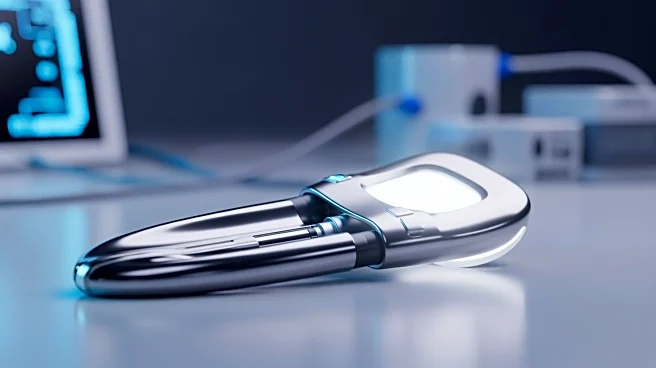What's Happening?
The global implantable medical devices market is projected to grow significantly, reaching approximately USD 179.70 billion by 2034, according to Nova One Advisor. This growth is attributed to the increasing
prevalence of chronic diseases in an aging population and technological advancements in medical devices. The market, valued at USD 97.55 billion in 2024, is expected to grow at a compound annual growth rate (CAGR) of 6.3% from 2025 to 2034. North America currently dominates the market due to its advanced medical infrastructure and high incidence of chronic diseases. The cardiovascular implants segment holds the largest market share, while the dental implants segment is anticipated to grow rapidly. Innovations such as 3D printing in dental implantology and robotic-assisted surgical solutions are contributing to the market's expansion.
Why It's Important?
The projected growth of the implantable medical devices market highlights the increasing demand for advanced healthcare solutions in response to chronic diseases. This expansion is significant for the U.S. healthcare industry, as it underscores the need for continued innovation and investment in medical technology. The market's growth could lead to improved patient outcomes, reduced healthcare costs, and enhanced quality of life for individuals with chronic conditions. Additionally, the rise of 3D printing and robotic-assisted technologies in medical procedures may streamline operations, reduce recovery times, and increase the precision of surgical interventions. Stakeholders in the healthcare sector, including hospitals, outpatient facilities, and medical device manufacturers, stand to benefit from these advancements.
What's Next?
As the market continues to grow, further developments in medical technology are expected. The integration of artificial intelligence and advanced case management systems could enhance pre-surgery processes and patient care. The expansion of the market may also lead to increased competition among medical device manufacturers, driving further innovation and potentially lowering costs. Regulatory bodies and healthcare providers will need to adapt to these changes, ensuring that new technologies are safely and effectively implemented. The ongoing evolution of the implantable medical devices market will likely have a lasting impact on the healthcare landscape, influencing policy decisions and investment strategies.
Beyond the Headlines
The growth of the implantable medical devices market raises important ethical and regulatory considerations. As new technologies emerge, ensuring patient safety and data privacy will be paramount. The use of advanced materials and personalized implants may also prompt discussions about accessibility and affordability, particularly for underserved populations. Additionally, the environmental impact of increased production and disposal of medical devices could become a concern, necessitating sustainable practices within the industry. These factors highlight the need for a balanced approach to innovation, prioritizing both technological advancement and social responsibility.











